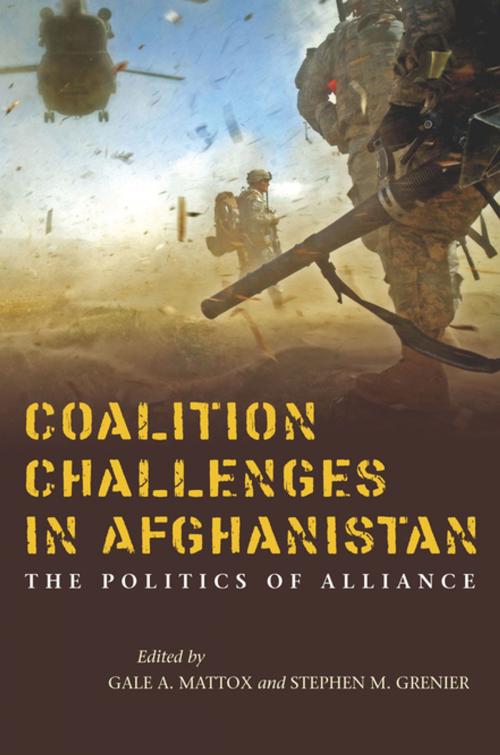Coalition Challenges in Afghanistan
The Politics of Alliance
Nonfiction, Social & Cultural Studies, Political Science, International, International Security| Author: | ISBN: | 9780804796293 | |
| Publisher: | Stanford University Press | Publication: | December 2, 2015 |
| Imprint: | Stanford Security Studies | Language: | English |
| Author: | |
| ISBN: | 9780804796293 |
| Publisher: | Stanford University Press |
| Publication: | December 2, 2015 |
| Imprint: | Stanford Security Studies |
| Language: | English |
This book examines the experiences of a range of countries in the conflict in Afghanistan, with particular focus on the demands of operating within a diverse coalition of states. After laying out the challenges of the Afghan conflict in terms of objectives, strategy, and mission, case studies of 15 coalition members—each written by a country expert—discuss each country's motivation for joining the coalition and explore the impact of more than 10 years of combat on each country's military, domestic government, and populace. The book dissects the changes in the coalition over the decade, driven by both external factors—such as the Bonn Conferences of 2001 and 2011, the contiguous Iraq War, and politics and economics at home—and internal factors such as command structures, interoperability, emerging technologies, the surge, the introduction of counterinsurgency doctrine, Green on Blue attacks, escalating civilian casualties, and the impact of the Provincial Reconstruction Teams and NGOs. In their conclusion, the editors review the commonality and uniqueness evident in the country cases, lay out the lessons learned by NATO, and assess the potential for their application in future alliance warfare in the new global order.
This book examines the experiences of a range of countries in the conflict in Afghanistan, with particular focus on the demands of operating within a diverse coalition of states. After laying out the challenges of the Afghan conflict in terms of objectives, strategy, and mission, case studies of 15 coalition members—each written by a country expert—discuss each country's motivation for joining the coalition and explore the impact of more than 10 years of combat on each country's military, domestic government, and populace. The book dissects the changes in the coalition over the decade, driven by both external factors—such as the Bonn Conferences of 2001 and 2011, the contiguous Iraq War, and politics and economics at home—and internal factors such as command structures, interoperability, emerging technologies, the surge, the introduction of counterinsurgency doctrine, Green on Blue attacks, escalating civilian casualties, and the impact of the Provincial Reconstruction Teams and NGOs. In their conclusion, the editors review the commonality and uniqueness evident in the country cases, lay out the lessons learned by NATO, and assess the potential for their application in future alliance warfare in the new global order.















